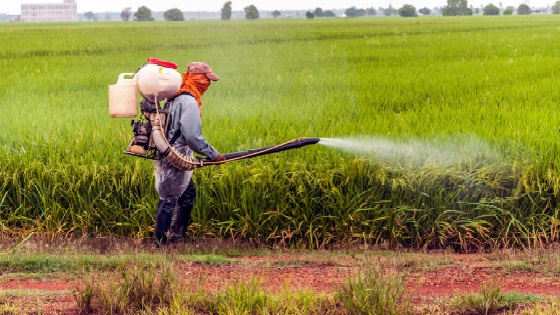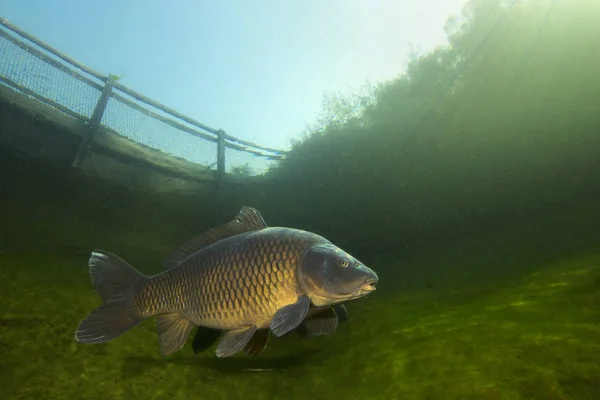In this post, learn how to protect yourself from pesticides exposure or poisoning. These safe use and/or handling tips are can be used by you if you are a farmworker, farmer or consumer.
You are are at a risk of pesticides exposure from time to time, either directly or indirectly. This can occur as a single significant exposure or small continuous exposures to residues.
What is pesticides exposure?
Wondering how do pesticides end up entering your bodies and poisoning you? There are four types of pesticides exposure; ingestion, inhalation ,dermal exposure or indirect exposure. This can occur when you are mixing, applying or cleaning up the farm chemicals.
- Ingestion (by mouth); accidental or unintentional ingestion of pesticides when eating, smoking or drinking
- Inhalation (through lungs); inhaling powders, mists or vapors.
- Dermal exposure (through the skin);Exposure to a splash or mist when mixing, loading or applying the pesticide. or touching equipment, protective equipment or surface with pesticide residues.
Indirect pesticide exposure is the most common. It happens when you are exposed to high chemical residues present in fresh food. Besides, you can also suffer harmful doses of farm chemicals present in the environment from contaminated water, soil or air.
What is pesticides Poisoning?
Pesticide poisoning occurs when pesticides, chemicals intended to control a pest, affect non-target organisms such as humans, wildlife, plant, or bees. For humans, pesticides poisoning depends on two key factors; toxicity and the absorption rates.
The absorption rate is the amount of chemical in contact with the skin that will get into the body. We have varying absorption rates for different body parts. The highest is experienced on the scrotum. The ear canal, forehead and scalp. the abdomen, ball of feet, the palm of head and forearms have a high absorption rate.
Toxicity on the other hand is the chemicals state of being harmful. According to the World Health Organization (WHO) there are five classes of hazard or toxicity of pesticides as shown in the table below.

Types of pesticides poisoning
The most toxic chemicals cause the most harm when the substance gets absorbed into one’s body. Pesticide poisoning is manifested in the nervous system. There are three types of pesticides poisoning;
| Mild Poisoning | Moderate Poisoning | Severe Poisoning |
|---|---|---|
| 1. Irritation on nose, throat, eyes or skin 2. Headache 3. Dizziness 4. loss of appetite 5.Thirst 6.Nausea 7.Diarrhea 8.weating 9. weakness or fatigue 10. Restlessness 11. Nervousness 12. Changes in mood 13. Insomnia | a. Vomiting b. Excessive salivation c. Coughing d. constriction in throat & chest e. Abdominal cramps f. blurred vision g. Rapid pulse h. Excessive perspiration i. Profound weakness j. Trembling k. Muscular incoordination l. Mental confusion | 1. Inability to breathe 2. Extra phlegm or mucous in the airways 3. Small or pinpoint pupils 4. Chemical burns on the skin 5. Increased rate of breathing 6. Loss of reflexes 7. Uncontrollable muscular twitching 8. Unconsciousness 9. Death |
What health effects are associated with pesticides?
Do pesticides cause cancer? Pesticides contamination is very harmful. Apart from giving you chronic diseases like cancer, it can also kill you instantly. There are three forms of health effects from pesticides poisoning ; allergic, acute or chronic reactions.
| Types of Pesticides Poisoning | Health effects |
|---|---|
| Allergic reactions | Skin itching, rash, blisters or skin burning |
| Acute Reactions | Dizziness, blurred vision, headache, vomiting, convulstions, coma or death |
| Chronic Reactions | Infertility, chronic respiratory ailments, skin or liver cancer etc |
What is Pesticide safe use and handling
Having an understanding the unintended consequences of pesticides on human health and environment, there is a need to limit their exposure. This is achieved through safe use and proper handling. The goals of pesticides include
- For consumers, the aim is to limit ingesting fresh farm produce (vegetables and fruits) with high chemical residues above the MRLs.
- For chemical handlers (sprayers and farmers) the goal is reducing exposure while handling and spraying toxic farm chemicals.
The following section outlines various handling and safe use tips or practices that are best for you.
How can chemical sprayers and handlers limit Pesticides exposure

Chemical handlers are at highest risk of pesticides poisoning. Its because they have a direct responsibility of handling and mixing farm chemicals. To protect yourself as a sprayer harmful farm chemicals consider following tips; use appropriate PPEs, use a motorised sprayer and build your capacity by undertaking the latest training;
1. Use quality PPEs
Many applicators understand farm chemicals are harmful. To protect themselves they use inappropriate materials such as motorbike helmets and polythene bags to limit contact with poisonous chemicals. Effective protection requires you to invest in appropriate personal protective equipment (PPEs). Wear the recommended pieces of equipment on the pesticide label. The rule of thumb is to wear much than less. As the toxicity level, rise towards (red band), you should wear more equipment.
Where to buy cheap PPEs?
A quality PPE is durable, unsusceptible to wear and tear and liquid proof. You will find the recommended ones in most agro-shops and stores near you. you might find them stocking PPEs for sale as a package or in different parts such as coveralls alone.
Another alternative where you can buy cheap quality PPEs is online. You can have them mailed to your address within 21-30 days. you can order them as a full package containing all the image above. Ensure you specify your right fitting size so they can fit for effective protection.
You can find PPEs with highest ranking and reviews here.
2. Undertake the latest training
The most effective way to protect oneself from harmful farm chemicals is updating yourself with the latest information on crop protection and IPM To do this, buy books on IPM and pesticides practices like the IPM in Practise available from amazon books. You can also subscribe to online courses to learn about the newest developments in this field. This will help you gather information on invasive pests, pesticide resistance, volatile organic compounds, endangered species, and more. Shop for a book or enrol in a course today
3. Use a motorized sprayer
The knapsack sprayer is the best application equipment of choice among smallholder farmers. They come in a variety of models, choices and brand names for farmers to choose from. One of the best models is a motorized pump or sprayer that allows handlers to reduce exposure or time in contact with the hazardous substances since they allow for a fast application covering large areas in a short time. To shop and order one today see the best collection here.
Other options to consider are the hand-held sprayers and the backpack carried knapsack sprayers
How can farmers reduce pesticides poisoning
Just like sprayers, farmers are exposed to hazardous chemicals while shopping, handling, storing and handling of excess and expired chemicals and containers.
Farmers hold the greatest responsibility in enabling food safety in our markets. By observing the post-harvest interval (PHI), they cut down consumer’s exposure to excessive residues above the Maximum residual levels (MRLs). In addition, they maintain records and feed information on traceability systems for enhanced safety.
4. Dos and Don’ts of pesticides handling
Some of dos and don’ts/ tips that farmers can adopt to be safe when handling chemical pesticides are;
- Buy genuine and registered products from reliable trusted suppliers in your area.
- Order farm chemicals before spray season set in. Buy only enough quantities for the season to avoid having excess or expired chemicals in your hands.
- Ensure you buy farm chemicals in their original sealed containers with no evidence of cap or lid tamper. The containers should not be leaking or damaged.
- While using public transport to ferry chemicals from town to farm in villages, isolate pesticides from food and animal feed to avoid contamination. Ensure you do not place them between passengers.
- While storing chemicals at home, keep them in original containers. Keep them away from living quarters and keep them away from food and animal feed. The containers should be in a lockable cupboard or box in a dry place away from direct sunlight. Place powdered chemicals on top of liquid-based chemicals. Remember to use the oldest pesticides first.
- Never re-use the empty pesticide packages as they can contaminate people, animals and the environment. Triple rinse the liquid containers and puncture with a sharp object and squash to the small unusable unit. For boxes and bags, destroy them to make unusable. According to FAO, the correct disposal should be incineration or recycling (do not confuse with cleaning and re-using.)
5. Observe GAPs and practice IPM.
Farmers can use alternative products to control pests, diseases and weeds on their farms. Some options include adopting Integrated Pest Management (IPM) and using Bio-pesticides.
- IPM requires growers to prevent, monitor and intervene in crop production to minimize the use of pesticides through a range of physical, biological and chemical methods.
- Bio-pesticides encourages the use of natural enemies (predators, parasitoids and pathogens) to suppress or prevent a pest outbreak by weakening or killing insects, microorganisms and weed pests.
The above proposals can reduce our exposure to toxic farm chemicals as handlers, farmers and consumers. Do you have additional suggestions? Leave your comment below.
Tips for consumers
Commercial farming uses huge volumes of synthetic fertilizers, pesticides and antibiotics to maximize profits for food growers and suppliers. This exposes consumers to high pesticides, hormones and antibiotic residues in animal and crop foods. To protect yourself and loved ones from this health hazard, you can;
6. Grow your own organic vegetables
Each household should have a kitchen garden whether they live in town or a rural area. The beauty of a backyard garden is that you can grow your food organically cutting on use of toxic farm chemicals. Explore how you can become an urban farmer and peruse on various vegetables you can grow. you can do this in vertical, balcony or rooftop gardens to get enough food for self-consumption and sale to neighbours at a premium price.
7. Buy safe and traceable products only
Unfortunately, food traceability systems in most developing countries are weak. However, there are few leading food wholesalers and retailers who stock safe products. They make sure these are hygienically grown, handled and distributed using Good agricultural practises (GAPs). A few can allow the consumer to access and trace the products information from “seed to shelf” through a fresh produce traceability system. For your household’s safety, buy food you can ascertain its source.



